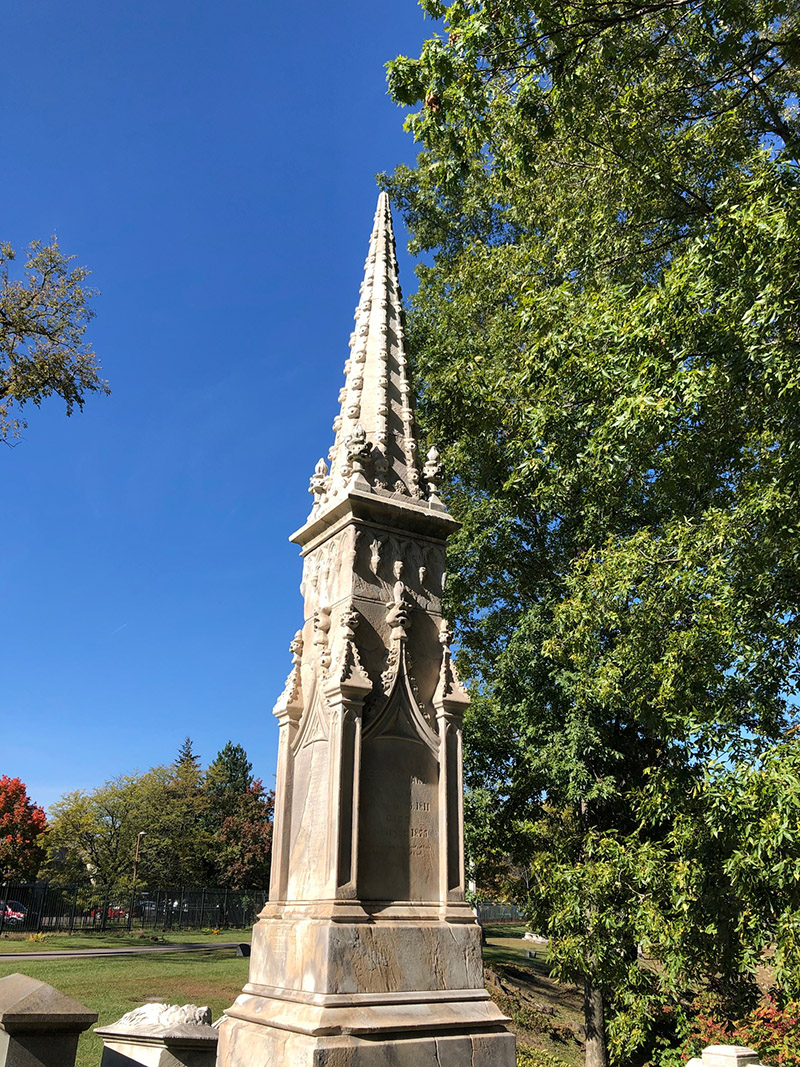Click here to view or download a PDF.
Eber Brock (E.B.) Ward was born on December 25, 1811 in New Hamborough Upper Canada during his parents' move from Vermont to Michigan. In 1833, he moved to Newport, Michigan to work for his Uncle Samuel Ward who was a reputable businessman and shipbuilder. E.B. positioned himself to inherit his uncle’s property by marrying a niece of his uncle’s wife.
In 1840, E.B. was the captain of the Huron, the first steamship built by Samuel Ward’s shipyard. During this time, the westward migration through the Great Lakes was taking place and Samuel and E.B. were able to benefit from this using the routes they had set up. In the years prior to the railroad in Michigan, they ran monopolized travel and freight through the Great Lakes. One of the first steel–hulled boats to navigate the Great Lakes was in fact E.B.’s boat.
Ward’s ships had regular runs between Cleveland, Ohio and Detroit. He would regularly carry freedom seekers to Canada with his paying customers and shipping orders.
E.B. began to invest in large tracts of pineland for the lumber in the early 1850s. He constructed a mill, docks, warehouse and supply store in Forestville, Michigan but, before the town was officially named, he sold all of his holdings there and moved to Detroit.
In Detroit, Ward, an abolitionist, provided funding for Underground Railroad needs. Ward also raised funds for the Underground Railroad efforts in Detroit by hosting events that increased awareness about slavery and anti-slavery activism.
When his uncle died in 1855, combining the inheritance with his own investments brought him to the status of Detroit’s first millionaire.
In 1855, E.B. built the Eureka Iron and Steel Co. along the Detroit River. It was here that he was the first to use the Bessemer Steel Process. While he controlled a portion of the patents essential to generate steel by this process, his competitors managed related patents. Due to this overlap, neither could assemble a state of the art steel facility without violating the others’ claim. Thus a merger of patents took place and the Bessemer Steel Association was created.
By 1868, E.B. had expanded his interests to other states, including a rolling mill in Wisconsin and what would become one of the big four silver mines in Utah. He was brilliant when it came to diversifying his investment and business interests.
Ward died on January 2, 1875 and is buried in Section A, Lot 86. His monument is pictured below.
E.B. Ward is listed in Elmwood’s Underground Railroad Network to Freedom Self-Guided Tour Map


This material is based upon work assisted by a grant from the Association for the Study of African American Life and History (ASALH), funded by the Department of the Interior, National Park Service. Any opinions, findings, and conclusions or recommendations expressed in the material are those of the author(s) and do not necessarily reflect the views of ASALH or the Department of the Interior. Elmwood Cemetery’s Network to Freedom Application was completed by Carol Mull and Gabrielle Lucci. This biography was completed based upon the Application and records available through Elmwood Cemetery, Detroit Historical Society, Burton Historical Library, Military Records of the United States, Michigan Historical Center, and various information sources.
